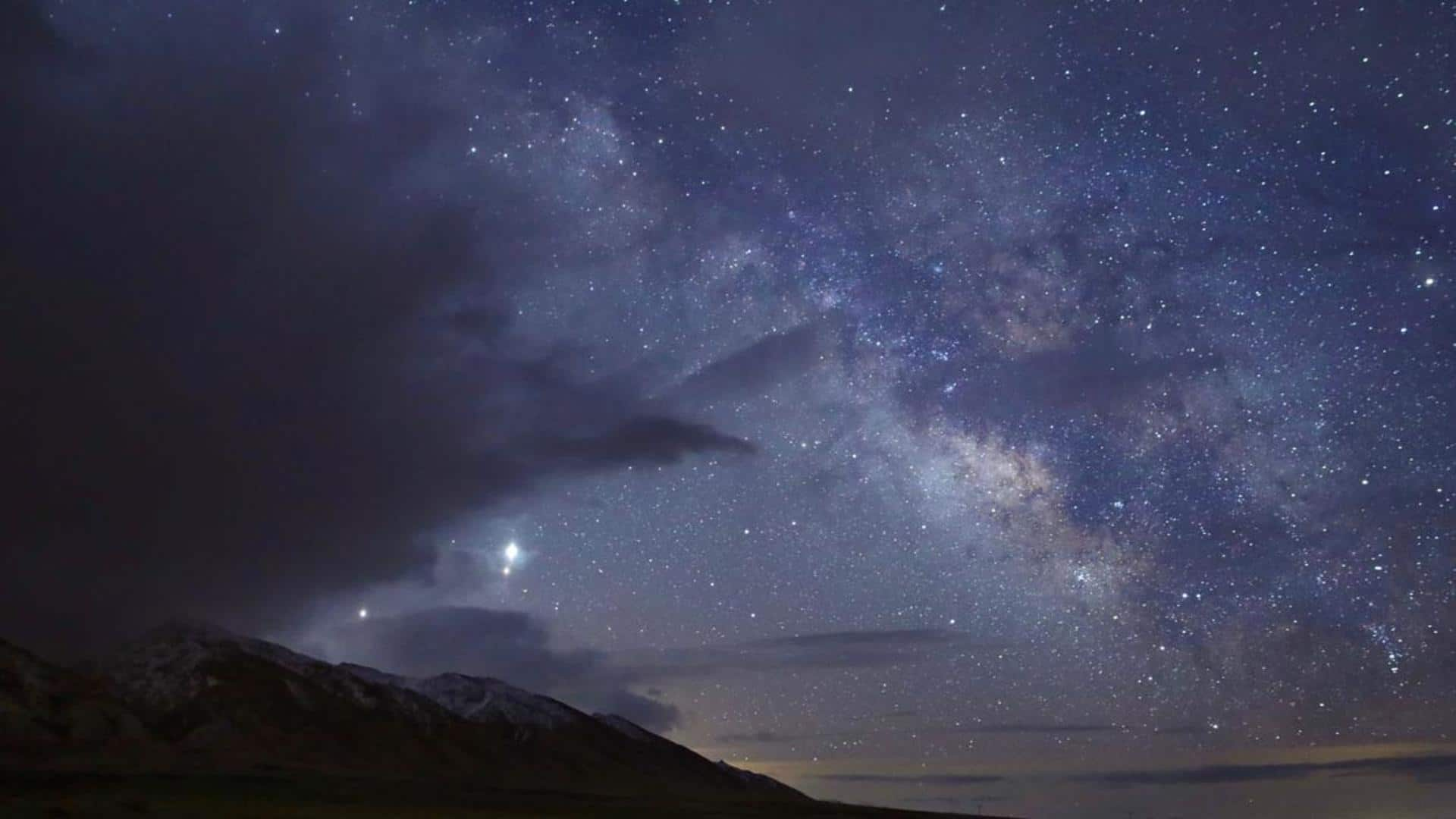
Mercury will reach its highest point in evening sky today
What's the story
You will be able to see Mercury climb to its highest point in the evening sky today.
It will be seen at an altitude of 17 degrees over the western horizon just around sunset.
The planet could be slightly hard to spot but you should not miss this opportunity since it will disappear from view in the third week of April.
Viewing
Mercury will lie beneath Venus in the night sky
Mercury will lie in the constellation Aeries tonight. If you are in the northern hemisphere, look west after sunset and you will be able to spot Mercury below Venus in the evening sky.
The planet will be seen shining brightly with a magnitude of -0.0 according to In the Sky.
The planet will set at around 6:42am IST on April 12.
Great elongation
Mercury is at its farthest point from the Sun today
Today is also when Mercury is farthest from the Sun, called the "greatest elongation." The planet will be visible for a few weeks around this time.
These apparitions take place approximately once every three to four months. Mercury could be visible in the mornings or evenings, depending on whether it lies to the east or west of the Sun.
Apparitions
Mercury's position relative to Sun determines its visibility from Earth
When Mercury lies on the east side of the Sun, it rises and sets just after the Sun does, an evening apparition. It will be observable in the early evenings and during twilight.
Conversely, if it lies to the west of the Sun, it rises and sets shortly before the Sun does and is visible shortly before sunrise, a morning apparition.
Information
Specific times of the year are better for spotting Mercury
Certain times of the year are considered better for viewing Mercury. Depending on the time of the year, from Kolkata, Mercury reaches a maximum altitude ranging between 15 and 24 degrees above the horizon during evening apparitions, as per In the Sky.
Phases
When is it easier to spot Mercury?
Mercury will fade quickly from the night sky, close to the end of the apparition as it inches toward inferior conjunction when it will cross between the Earth and Sun.
During this period, its unilluminated side will face Earth, and will appear as a thin, dim crescent.
It's easier to spot Mercury in the days before it reaches its highest point in the sky.
Information
March-April is favorable to spot Mercury from the northern hemisphere
March and April are favorable times to spot Mercury from the northern hemisphere, but that might not be the case for the south. Mercury is said to be most prominent in the southern hemisphere when that part of the globe heads toward equinox in September.